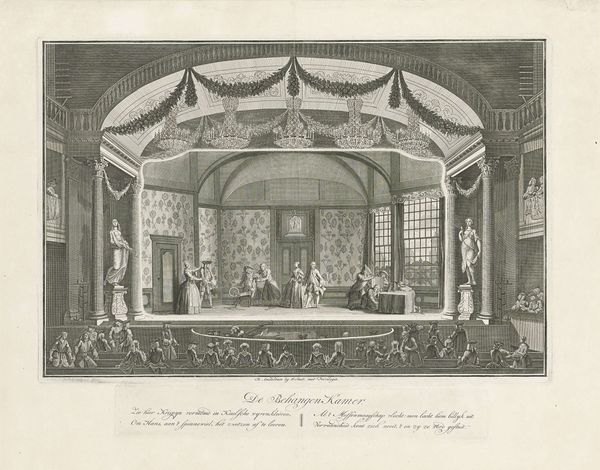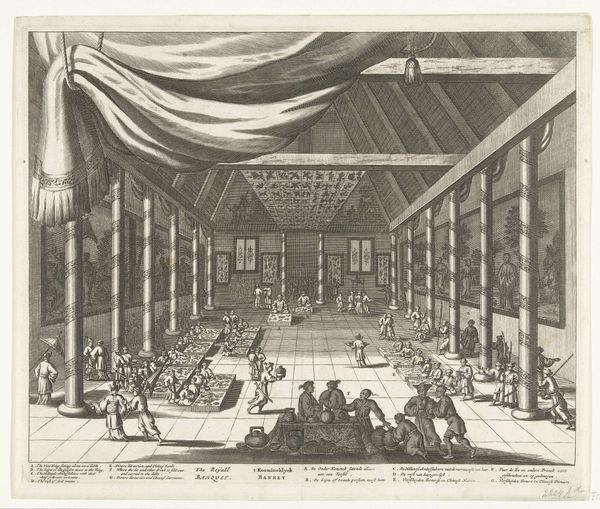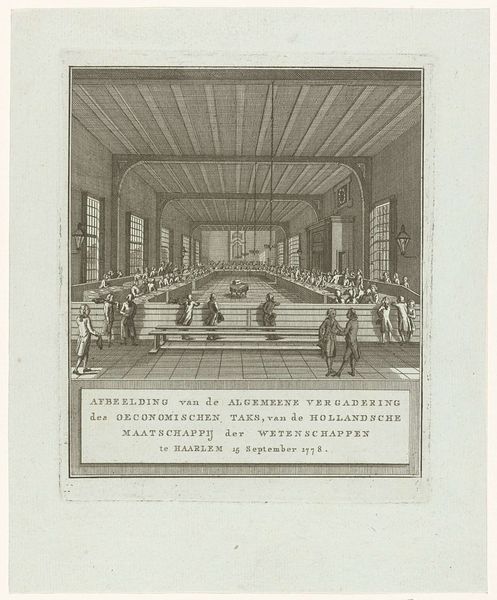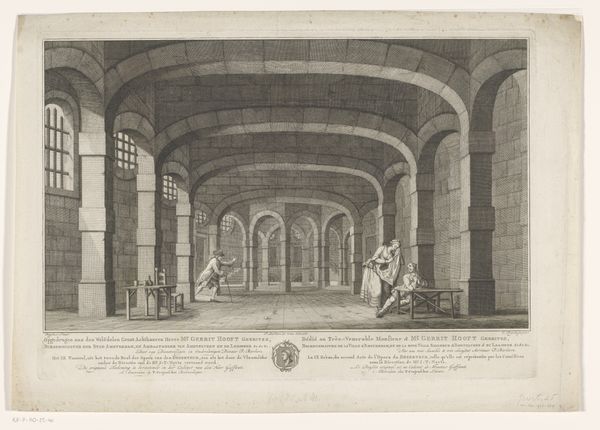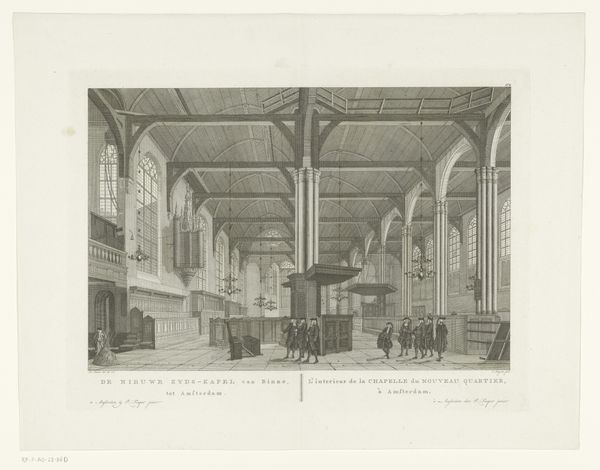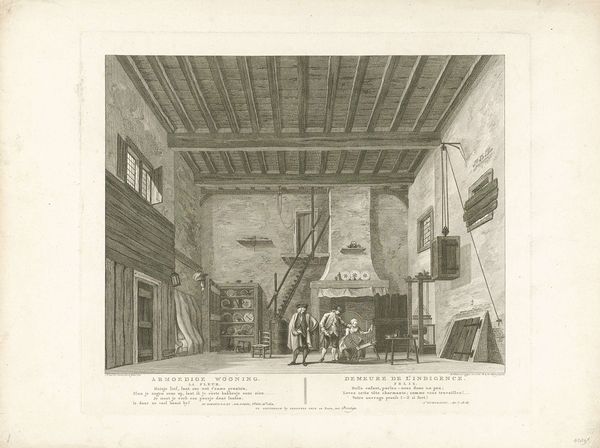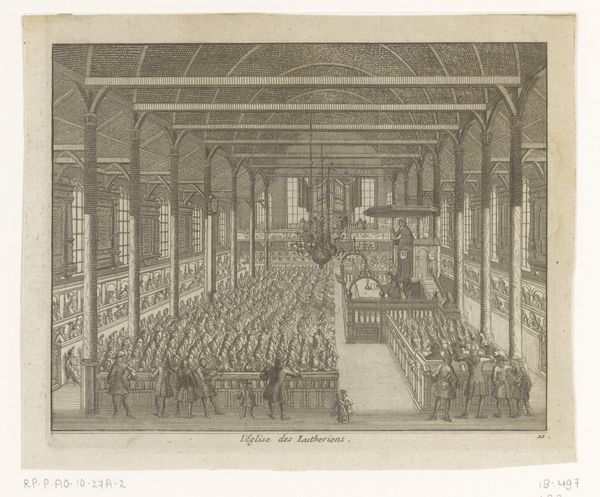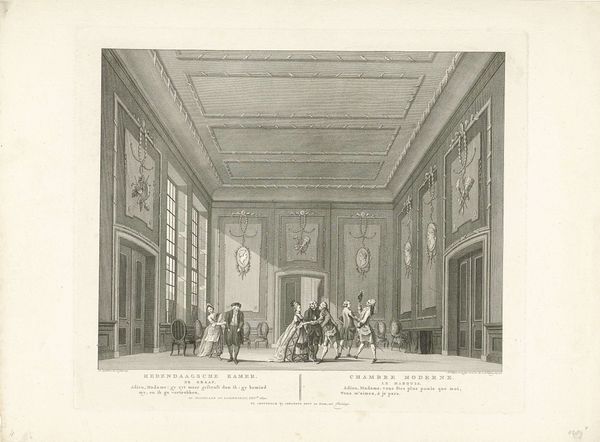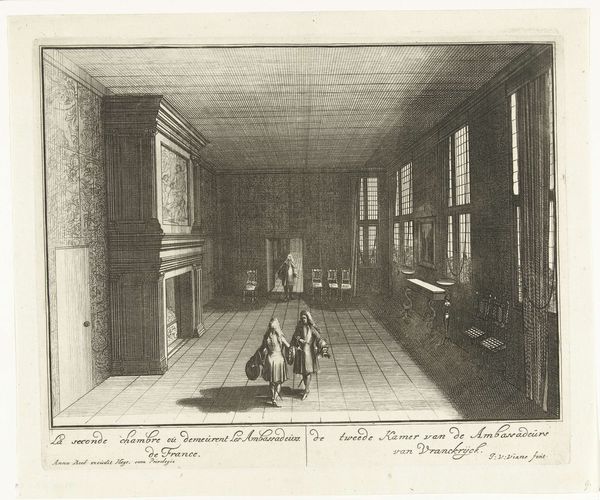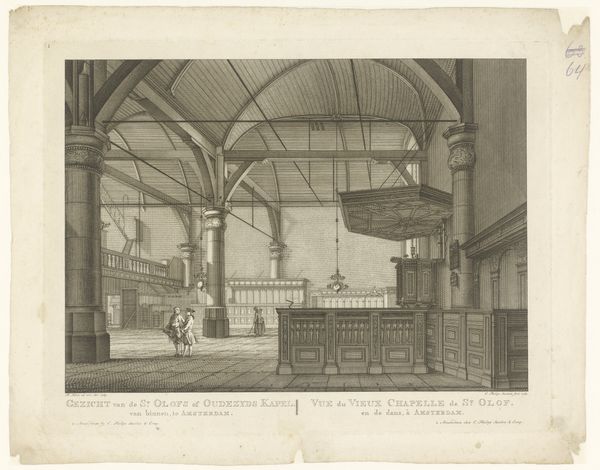
Dimensions: height 280 mm, width 390 mm
Copyright: Rijks Museum: Open Domain
Editor: This is Hermanus Petrus Schouten’s "Interior of the Spinhuis in Amsterdam," made between 1770 and 1783, and it’s an engraving. The long lines create a stern, almost regimented feel. What compositional elements strike you? Curator: The most striking aspect is the geometric precision. Note the linear perspective, meticulously rendered, receding into the distance. The orthogonals converge precisely, drawing the eye to a vanishing point that dictates the spatial organization. Consider the interplay of horizontal and vertical lines. Editor: The bars and beams create strong lines indeed. Curator: Precisely. Observe the strong verticals of the columns juxtaposed with the emphatic horizontality of the beams and the tiers upon which the women are seated. This grid-like structure imposes a sense of order, almost discipline, upon the scene. How do you perceive the balance? Editor: It feels very balanced in a formal sense, quite symmetrical almost, but is there any play within that strict form? Curator: Look at the subtle variations in tone achieved through the engraving technique. The artist modulates the density of the lines to create areas of light and shadow, articulating form and adding depth to the composition. This sophisticated use of chiaroscuro softens the severity of the architectural structure. Do you notice the artist’s implementation of light coming from the right windows? Editor: Yes, that interplay makes a huge difference! I was only looking at the shapes. I’ll be sure to consider more carefully how artists modulate tone in prints moving forward.
Comments
No comments
Be the first to comment and join the conversation on the ultimate creative platform.


